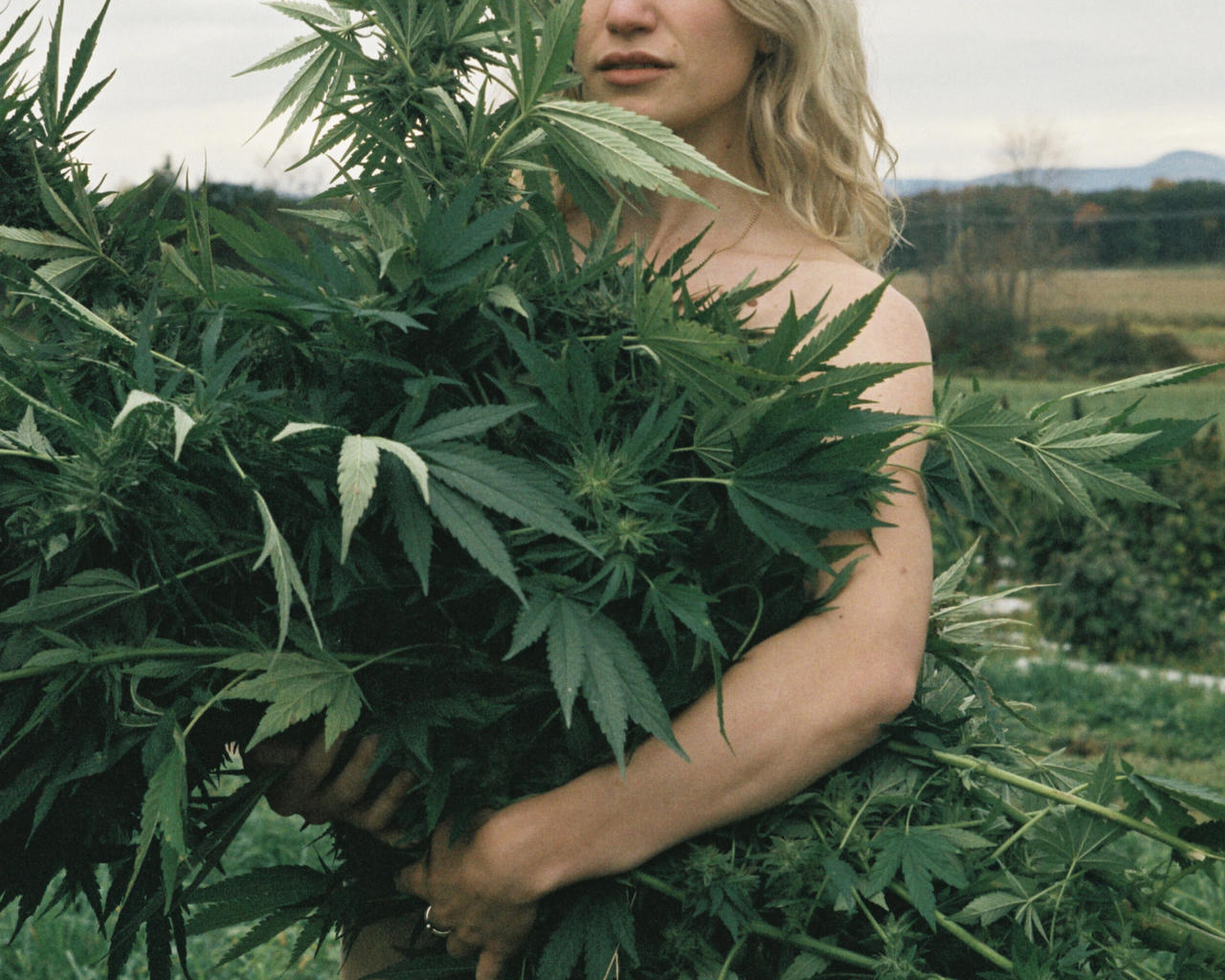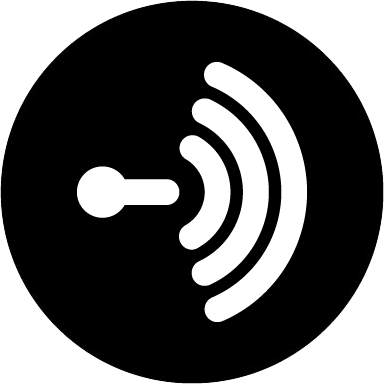DR. PHILIP WATKINS:嚴格說來,從草藥的角度來看,我想你已吸食過量。換句話來說,即是太多四氫大麻酚。因為嚴格說來,你應該會感到輕鬆。你應該能感受到好處,除此之外別無其他。
CHRISTEL:原來如此。
DR. PHILIP WATKINS:所以就你的看法,火麻應該不會令你感到亢奮。它具有非精神活性,可與全身的受體協作,這就是為甚麼與大麻素系統有關。因為肺部、心臟、消化系統和四周都有大麻素和大麻二酚受體,不論是肩膊和雙腿,幾乎無處不在。
CHRISTEL:那麼這個系統是甚麼,你所指的內部系統在體內起了甚麼作用?它指的是甚麼?神經末梢、血液,還是是甚麼?
DR. PHILIP WATKINS:最重要的是,它主要為不同系統和身體器官提供支持。內源性大麻素系統原指受體的集結。CB1 受體存在於大腦和脊髓內。在其他外圍部位還有 CB2 受體,包括肺部、心臟、免疫細胞、胰腺等。這就是令人興奮的地方,因為我們知道大麻二酚是多營養性,這個別致的命名源於它具有不止一種功效。維他命 D 也是屬於多營養型,對人體有多種功用。因此有大量研究針對內源性大麻素系統。它確實可對每個人的全身產生相對大的影響,因為每個人體內都有大麻素系統。這真的十分引人入勝。
CHRISTEL:那太瘋狂了。
DR. PHILIP WATKINS:實在是瘋狂,所有人都有。你知道自己有這個系統。
CHRISTEL:不過,我不知道應該如何將它命名,究竟是物質、草藥還是藥物,或者由你們命名——它已被標籤。
DR. PHILIP WATKINS:沒錯,這個情況正在改變。
CHRISTEL:的確是。
DR. PHILIP WATKINS:它也需要改變一下,其他形式藥物的標籤也有所改變。我一直追隨 Rick Doblin ,他創建了 MAPS 協會,這個名字很奇怪,「迷幻藥研究協會」。越戰後,他製定了一項策略,將搖頭丸用於創傷後壓力綜合症及壓力障礙。
現已成立了 50 年,而到去年為止,這筆資金已真正用於幫助患有創傷後壓力症候群的退伍軍人。相對於我們最初擁有的事物,環境有了很大的改變——毋須太誇張,由最初被妖魔化或產生負面形象,現在可看到它們對我們的真正幫助。
CHRISTEL:是的,與酒精等對比,這是完全合法的,但同時又完全被濫用。
DR. PHILIP WATKINS:沒錯,對的。因此,我認為這是我們需要在教育方面取得平衡的地方。從治療角度來說,明顯地我們需要真正幫助人們了解大麻,而且我認為應該遠離大麻,例如可以對人們提供以大麻為題的教育。
CHRISTEL:對。
DR. PHILIP WATKINS:不過相反而言,人們也經常想到大麻的有害成分。而且我對大麻二酚其中一個感興趣的地方是它與大腦淋巴系統的聯繫。我是否話太多了?
CHRISTEL:怎會呢?
DR. PHILIP WATKINS:我對它很感興趣。你需要進睡的原因之一是因為你的大腦⋯⋯
CHRISTEL:因為我很疲倦。
DR. PHILIP WATKINS:不是,因為你精疲力盡。因為大腦實際上需要進行內部清洗。淋巴系統是不同血管和運輸系統的集結,這些系統可清除大腦產生的廢物,但也有助運輸神經遞質(如血清素)及令你感覺良好的化學物質,以及其他重要的東西如葡萄糖。睡眠時,大腦排毒的過程由星形膠質細胞的化學物質監控。大麻二酚其中一個最了不起的是,它被視為可增加大腦中星形膠質細胞的水平。因此睡眠時,大腦有足夠的刺激排毒。每當提及衰老時,這種淋巴系統對我們來說非常有趣的其中一個原因是:隨著年齡增長,淋巴系統活動實際上會減少。這是我們開始發現大腦無法自我清潔的地方,也可能就是認知障礙症、失智症及其他腦退化疾病發生率更高的原因。
CHRISTEL:真的。
DR. PHILIP WATKINS:因為大腦無法自行清潔。
CHRISTEL:思想變壞。
DR. PHILIP WATKINS:是的。我沒想過,但是你說得沒錯。字面上的確是這個意思。你還提到了另一個方式:乾淨飲食法。保持星形膠質細胞水平一致,我們可能找到大麻二酚等產品的長期施用方式。而大麻種子——有些新方法可以做到這點。它們可以保護大腦更長時間。同時,我們亦相當重視抗炎和骨質疏鬆症,並有很好的研究針對大麻二酚的抗炎特性對牛皮癬皮膚的幫助——人們不一定完全了解。正如我提出的看法,我認為我們自己、父母和祖父母都會為認知能力下降感到擔憂,透過削弱系統或以大麻二酚管理內源性大麻素系統,我們能找到一種潛在的方法,在某程度上保護或至少阻止這種下降。因此,研究所得出的長期好處可能對每個人來說非常非常有用。
CHRISTEL:讓我們談談如何實際使用大麻二酚。如何刺激或令內在身體知道這是最有效?
DR. PHILIP WATKINS:內源性大麻素系統。
CHRISTEL:內源性大麻素系統。最好的做法是甚麼?
DR. PHILIP WATKINS:問得好。事實上取決你想要甚麼。我認為這是大麻二酚油最初打入市場的其中一個原因。我亦會局部使用在皮膚上,以不同措施幫助人們。
[00:20:00]
正如我所說,實際上我只是在過去兩年左右(或一年)取得大麻二酚。我的臨床結果仍未出現,但是總括來說,我已經看到一些不錯的成果。我認為這項研究正朝著口服噴霧瓶的方向發展。將它噴在面頰內側,在某種程度上可避開消化。
CHRISTEL:我想是直接進入血液。
DR. PHILIP WATKINS:沒錯。例如,如果你將它當作藥物,那麼 Sativex 或其他美國食品藥品監督管理局批准或國民保健署批准的醫用大麻通常都是噴霧劑。正如我所說,如果你希望將它用作補充劑,那麼油質或噴劑(強度較低)可能是個好選擇。絕對可以局部使用在皮膚上。
CHRISTEL:好的。就香港的管理機構而言,我們是否有這樣的機構呢?
DR. PHILIP WATKINS:香港衞生署是最主要的部門。我曾與他們短期合作,所有人都仍在努力中。出現這種情況的其中一個原因,就是因為研究仍處於非常初步的階段。因此可以肯定的是——正如我所說,如果有在實驗室進行大麻二酚產品測試,而四氫大麻酚含量為 0%,那麼以我所知是可以接受的。
CHRISTEL:精彩。如果可以的話,請問你可以分享一些軼事、故事或其他親身經歷的好處?
DR. PHILIP WATKINS:當然可以。我想我絕對可以分享我在診所的使用方式。我想看到了不起的事情是,當我治療他人的消化問題時,例如我們感知環境為威脅時,那便會自然告訴大腦這是不安全進食。這些信息會經人體接收,通常會在消化過程中接收到信息,表示好吧,我將在處理這種威脅時自我關閉,並在感到安全時進食。
對於很多人來說,對威脅的認知一直持續。在工作、電郵、所有一切——尤其在 2020 年威脅無處不在。對我來說,使用大麻二酚幫助人們減弱威脅。留意,我並沒有用「壓力」一詞,因為我認為 2020 年對所有人來說,都是相當普遍的特性。將大麻二酚用於協議的一部分,從而幫助人們看到廣泛的意義,實在是非常有趣的事。因為這讓我可獲得最佳結果,透過了解我們不只是無頭騎士,我們同樣會遇到消化等特殊情況——日常腹脹、腹部不適或類似問題,那麼利用大麻二酚等物質既可與全個系統協作,亦可以與大腦協作,實際上為人們提供精神空間,讓他們做自己需要做的事情,也許是運動,或者改變他們的飲食習慣——這可能是我使用大麻二酚的最大收穫。
CHRISTEL:有趣的是,當你表示身體或感覺到受威脅時,你就會知道那是身體的警告,告訴你這是不安全進食⋯⋯
DR. PHILIP WATKINS:嗯。
CHRISTEL:我的身體告訴我,大可放心地安全進食。
DR. PHILIP WATKINS:確實會。看,我想這很有趣,對吧?即使感到不安全,也是可以進食的,但是在消化時,你的身體不會⋯⋯
CHRISTEL:對。所以,我想大麻二酚等東西實際上可以使我們與身體更好地接觸,因為我們脫離了所需的東西,對嗎?
大麻二酚等東西實際上可以使我們與身體更好地接觸
DR. PHILIP WATKINS: So, technically, from a herbal medicine standpoint, I guess, you’ve actually gone too far, and you’ve ingested, if you like, too much THC. Because technically you should have a relaxed feeling. You should feel the benefits but you shouldn’t get any further than that.
CHRISTEL: I see.
DR. PHILIP WATKINS: So, to your point though, yeah hemp shouldn’t get you high. It’s non-psychoactive and it works with the receptors that are all over the body, and this is why the cannabinoid system is of such interest, because there are receptors for the cannabinoids and CBD in the lungs, the heart, the digestion, the peripheries – so your arms and legs, pretty much everywhere.
CHRISTEL: So, what is this system, the internal system that you speak of, what is it in the body? What is it referring to? Nerve endings, or blood, or what is it?
DR. PHILIP WATKINS: Yeah, so the big thing about it more than anything is that it’s primarily driven towards actually being around to help the different systems and the different organs of the body. So, the endocannabinoid system itself refers to the collection of the receptors. So, there are CB1 receptors in the brain and the spinal cord. Then there are CB2 receptors in the other periphery areas, so the lungs, and the heart, and the immune cells, and the pancreas and that type of thing. This is where it becomes quite exciting, because we understand that CBD is what we call a polytrophic, so that’s just a fancy name for it has more than one effect. Vitamin D is also polytrophic in that it has more than one effect on the body. So, the reason why this system is actually being researched a lot is because it can have quite a whole-body effect on everyone really, because we all have this endocannabinoid system. So, it’s really, really exciting.
CHRISTEL: That is wild.
DR. PHILIP WATKINS: It is crazy isn’t it, that everyone’s got it? You know, and you can – yeah.
CHRISTEL: And yet, you know, I mean, I don’t even know how to refer to it as a substance, as an herb or a medicine, or however you want to refer to it – it’s been so stigmatised.
DR. PHILIP WATKINS: It is, yeah, and that’s changing.
CHRISTEL: Yeah, it is.
DR. PHILIP WATKINS: It needs to change as well, and I think, just broadening that, you know, you’ve got other forms of medicine that are also having their stigma changed. I’ve been following Rick Doblin who has created an association called MAPS, which is – the name’s quite strange – in the Multidisciplinary Association for Psychedelic Studies. But he created a strategy after the Vietnam War to use MDMA for post-traumatic stress syndrome, stress disorder.
And it’s taken fifty years now and that is now, as of last year, been funded to actually help veterans with PTSD. So, there’s a really big change in the air in relation to things that we have originally – you know, without being too hyperbolic about it, originally demonised or had a negative relationship with, and now seeing that they can actually help us.
CHRISTEL: Yes, I mean, you know, to compare it to something like alcohol, which is perfectly legal and yet perfectly abused at the same time.
DR. PHILIP WATKINS: Sure, sure. So, I think this is where we need to find a happy balance between the educational side of it. Obviously, from a therapeutic element, we need to really, kind of, help people understand cannabis, and I think, moving away from – maybe educating people a little bit more about how marijuana was named, for example.
CHRISTEL: Yes.
DR. PHILIP WATKINS: I think the other side of this, though, is that we often think about cannabis for its acute elements as well, and I think one of my personal interests in relation to CBD is actually more related back to what’s called the glymphatic system in the brain. Now, tell me if I’m talking too much.
CHRISTEL: No, no.
DR. PHILIP WATKINS: I get excited about this. One of the reasons why you need to go to sleep, alright, is that your brain-
CHRISTEL: Because I’m tired.
DR. PHILIP WATKINS: No, this is, because you’re exhausted, yeah. It is because your brain actually needs to clean house. The glymphatic system is kind of a collection of different kind of vessels and transport systems that actually clean the waste products out of your brain, but also help to potentially transport neurotransmitters like serotonin and the chemicals that make you feel good. Also, other things that are really important like glucose. This process of somewhat brain detoxing while you’re sleeping is governed by a chemical called an astrocyte. Now, one of the cool things about CBD is that CBD actually is now considered to increase the levels of astrocytes in the brain, so that when you go to sleep you have got enough stimulus for the brain to detoxify itself. Now, when it comes to aging, one of the reasons why this glymphatic system is quite interesting to people is because, as you age, your glymphatic activity goes down, it actually reduces. This is where we start to see that the brain is unable to somewhat clean itself and this may be potentially why we’re seeing a higher incidence of things like Alzheimer’s and dementia, and some of these other brain degenerative diseases.
CHRISTEL: Wow.
DR. PHILIP WATKINS: Because it just can’t clean itself.
CHRISTEL: Dirty mind.
DR. PHILIP WATKINS: Indeed, yeah I didn’t think that, but you’re right on. It’s literally like that, though, right? And you talk about clean eating as another side of that. But then, you know, having this consistent astrocyte level, it means that we may actually be able to find a way through long-term administration of something like CBD. And, you know, hemp seeds – there are new ways of coming out with this. They may actually really protect our brains for a lot longer. So, whilst we kind of consider anti-inflammation, there’s some really great research in psoriasis for skin from the anti-inflammatory nature of CBD, osteoporosis – there are a lot of things that people don’t necessarily know about. But, as I said for me personally, I think we’re all worried about both for ourselves, our parents and our grandparents, I guess having a cognitive decline of sorts and we may, through the attenuation of this system or managing the endocannabinoid system with CBD, we may have found a potential way to, kind of, somewhat protect or at least stem the decline. So, there are longer term benefits coming out of the research that might be really super, super beneficial for everyone.
CHRISTEL: So, let’s talk about how you actually take CBD. I guess, how is it best effective to stimulate or speak to your endo-say it again?
DR. PHILIP WATKINS: Endocannabinoid system.
CHRISTEL: Endocannabinoid system. How best to do that?
DR. PHILIP WATKINS: Great question. So, it really just depends on what you want. I think the CBD oil is one of the things that, I guess, originally came onto the market. I’ve used it topically for skin as well, so there are measures that you can take in order to help people.
[00:20:00]
As I said, my, you know, this has really only been available to me over the last two years or so, or, say, a year. So, my clinical kind of outcomes are still coming around, but, topically, you can, I have seen some great results. So, I think the research is moving towards what’s called an oral buccal spray. So, actually spraying it on the inside of your cheek, which, somewhat then kind of dodges the digestion.
CHRISTEL: Straight to the bloodstream, I guess.
DR. PHILIP WATKINS: Right on, yeah. So, in that, if you’re using it as a medicine, for example, so Sativex or some of the other FDA-approved or NHS-approved forms of medical cannabis, they’re generally in a spray. As I said, if you’re looking to use it as somewhat of a supplement, then the oil or, you know, less intense version of the spray is probably a good one. For the skin, definitely try it topically.
CHRISTEL: Right, right, right. So, in terms of a sort of, I guess, governing body in Hong Kong, do we have one for this sort of stuff?
DR. PHILIP WATKINS: The Hong Kong Health Department is the primary one. Through the small amount of work that I’ve done with them, everyone’s still working it out. One of the reasons why this is the case is because the research is still very preliminary. So, there are certain – as I said, the rule is that if you have a lab go through your CBD offering, and it has 0% THC, at this point, in my understanding, at the time of this recording, it’s considered to be just fine.
CHRISTEL: Amazing. So, if I may, have you yourself, do you have any anecdotal, sort of any stories or anything, about your own personal experience of the benefits of this?
DR. PHILIP WATKINS: Sure. So, I think I can certainly speak to it from anecdotally on what I’ve used in the clinic. I think one of the cool things that, I think, I like to see is the fact that, I guess, when I treat someone’s digestion, for example, the way we perceive our environment in relation to, you know, threats and things like that are naturally going to tell our brain that it’s not safe to eat. That information then gets fed through the body and, you know, oftentimes the digestion will, kind of, receive that message and say okay well I’m going to turn myself off while you go and deal with that threat, and then we can eat when we feel safe.
Now, for a lot of people, the perception of that threat is constant, and, you know, work, email, you know, everything – 2020. So, for me, using CBD to help people, kind of, take the edge off that threat. And notice I’m not using the word stress, because I think in 2020 we can just all just say that that’s a pretty universal characteristic for all of us. But using CBD actually as part of a protocol to help someone in the broader sense has been really, really interesting to see, because that’s where I’ve gotten the best results is actually by understanding that we’re not just headless horsemen and women, and that if we come in with particular conditions such as the digestion – you know, your average kind of bloating or abdominal discomfort or things like that, that utilising something like CBD both to work with the whole system but also to work with the brain so that you can essentially give someone the mental space to, maybe, do what they need to do for themselves, you know, maybe a little bit of exercise, or change their eating behaviours – that’s been probably the most rewarding part of using CBD with my stuff.
CHRISTEL: Interesting, because I guess, you know when you say when the body or the person senses a threat and then that’s your body telling you it’s not safe to eat –
DR. PHILIP WATKINS: Mm-hmm.
CHRISTEL: My body tells me it’s way too safe to eat a lot.
DR. PHILIP WATKINS: Yes, indeed. Look, this is, I think, so, this is the interesting thing, right? Even though you eat when you feel like it’s not safe, okay, which is fine, your body, when it comes to your digestion, won’t get –
CHRISTEL: Yes. So, I guess what I’m getting at is that perhaps something like CBD can actually put us in better touch with our bodies, because we’re so out of touch with what we need, right?
CBD can actually put us in better touch with our bodies









